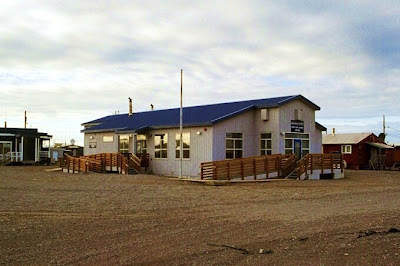Some time ago, I declared my admiration for the Arctic Tern as the most wonderful bird on the planet; now, I declare my sympathy for the Ermine, the most cute (though fearsome and deadly!) small mammal.
Ermines (Mustela erminea) live in the Arctic tundra of North America (Canadian high arctic), Greenland and Europe (Siberia). Their usual habitat: flat marshes, open spaces or rocky areas.
In the spring and summer they have brown to yellow-brown fur with paler or white fur on the belly and a black tip on the tail.
Ermine usually reach over 30 cm in length.
The head is triangular shaped with small round ears, small, bright eyes and long whiskers.

They grow white fur in the winter, but the tip of the tail remains black:
Ermine's black tail tip may draw any predator bird's attention and fool it into attacking the tail.
A small, white face pushes up through the snow, its black eyes gleaming brightly.
The ermine's flexible spine allows it to do the "marten run" in which the back is first arched, then extended.

Ermines are very territorial, and largely solitary animals.
Their life span is 4 to 7 years.
 Elusive predators, ermines are cruel little killers for there preys mainly mice, lemmings, squirrels, small birds, but also rats and sometimes rabbits!
Elusive predators, ermines are cruel little killers for there preys mainly mice, lemmings, squirrels, small birds, but also rats and sometimes rabbits! Ermine are largely nocturnal or crepuscular. Most of their preys are small rodents that live beneath the snow in winter. And in turn they are ferquent prey to wolves, foxes, cats and large birds.
Ermine are largely nocturnal or crepuscular. Most of their preys are small rodents that live beneath the snow in winter. And in turn they are ferquent prey to wolves, foxes, cats and large birds.
A long time ago, during the Middle Ages, the fur of the white phase of the ermine was popular in clothing, and had a strong symbolic meaning of purity.
"Ermine" portrait of Elizabeth I by Nicholas Hilliard, 1585
Nowadays ermines are almost never used in clothing.
Ermines were also choosed to figure in some coats-of-arms, because of that purity symbolism.
Ermine in Chateau-Blois window
Ermines are neither threatened or endangered. The world population is some trillions !




















































